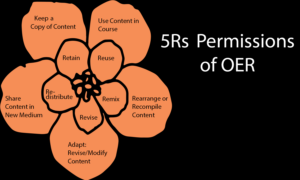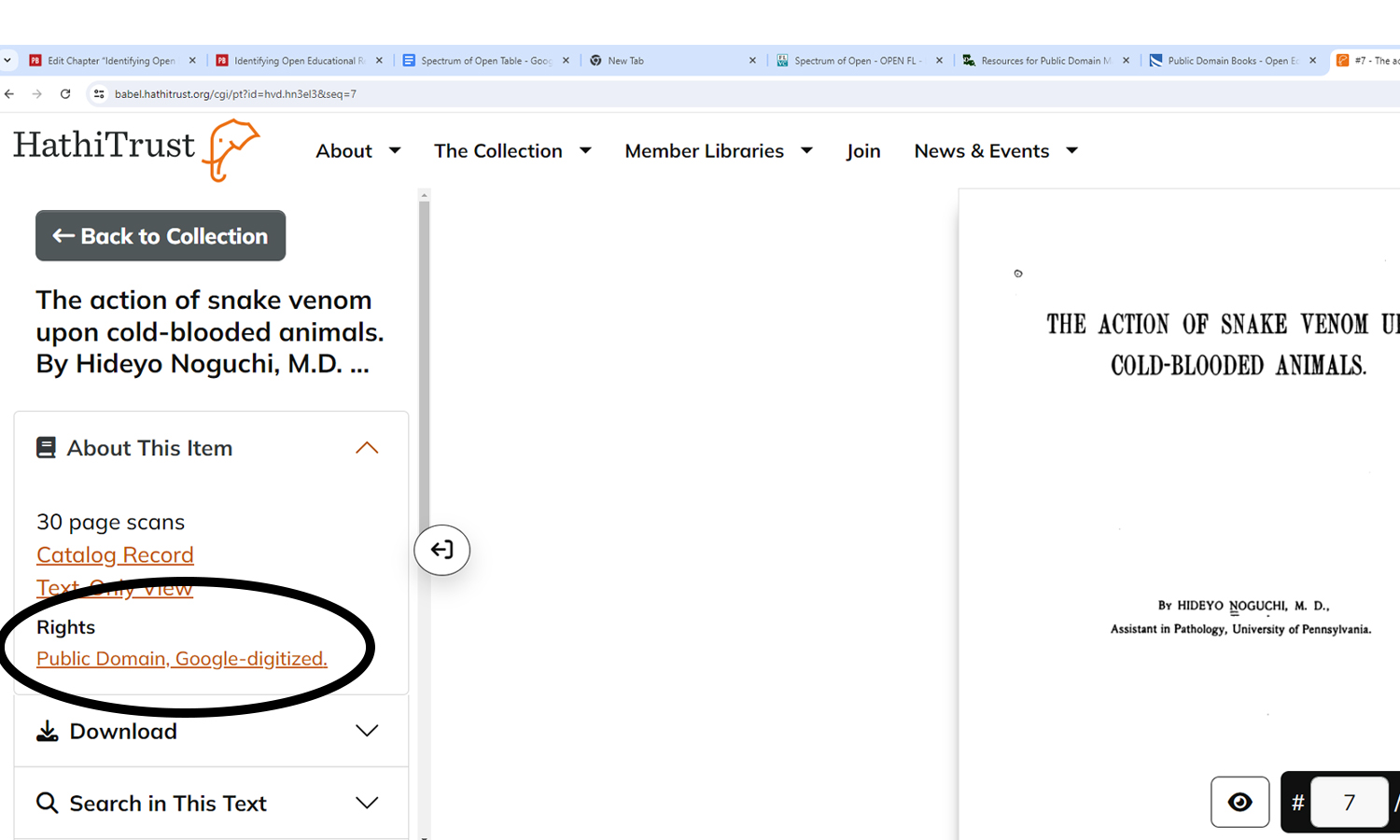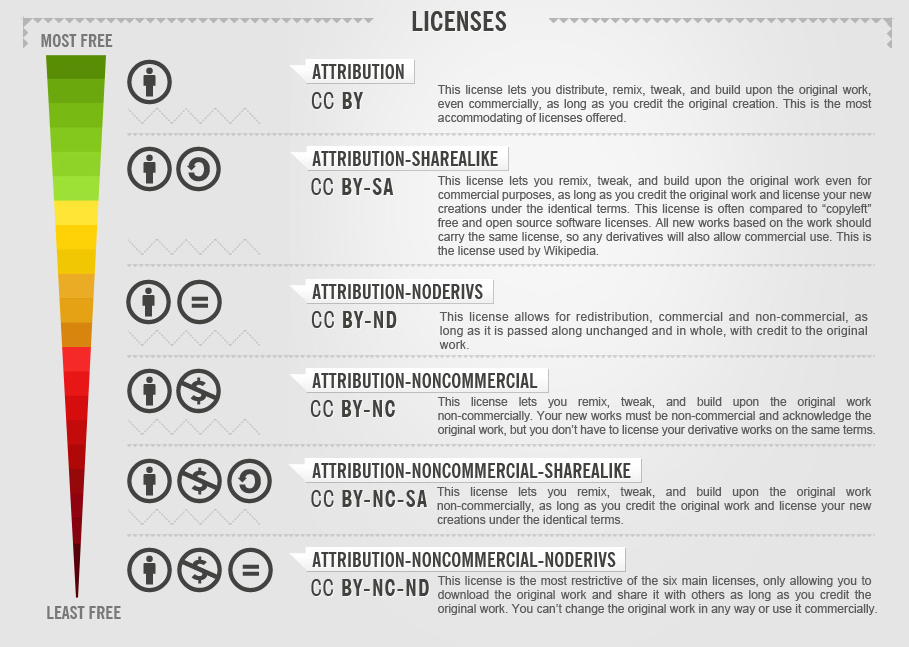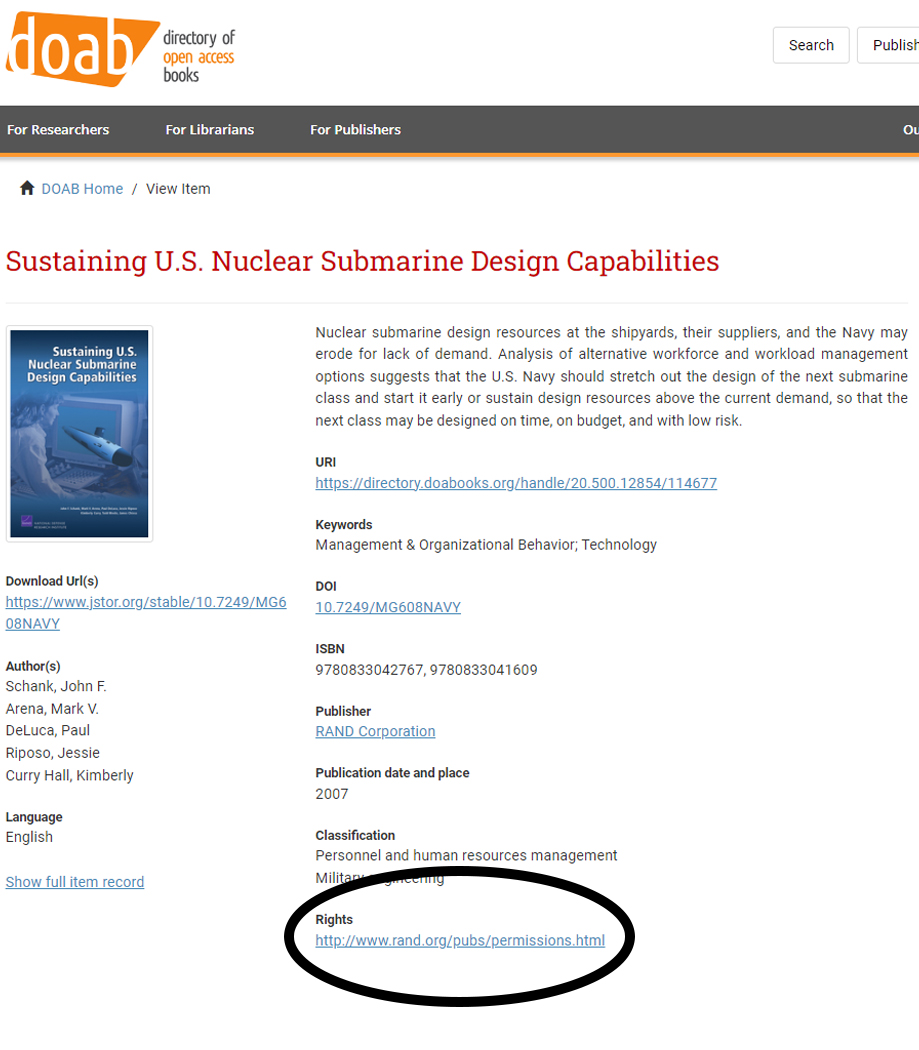3 Identifying Open Educational Resources
The Spectrum of Open Introduction. Rebel Cummings-Sauls. 2024. Transcript.
Learning Objectives
By the end of this chapter, one will be able to:
- Understand How to Identify Open Educational Resources in the Public Domain
- Identify Open Educational Resources by Recognizing Creative Commons Licenses
- Understand How Open Access Content with Permissions can Function as Open Educational Resources
Introduction
Adopting an open educational resources (OER) is usually straightforward. Only a basic knowledge of OER terms is needed to start. The first step to adopting an OER is to know how to find one. Instructors and other material selectors need to be able to identify OER in the real world. Content on web sites and in print can both be OER. The Spectrum of Open displays the most open content in the top right quarter of the circle. The most common OER also “live” here. If instructors get stuck trying to find potential OER to adopt, they should seek help. Library and copyright experts are excellent resources to learn more on OER and copyright. Learning to recognize public domain, Creative Commons (CC) licensed, and open access content with permissions is a skill that builds with time. “Retain” and “Reuse” rights are the most important permissions needed when looking to adopt OER.

Learning Objective Check-In
Public Domain
![]() The most open content, that is the public domain, may have a marker (shown here) or a statement of status (shown below). As these are newer designations, material will most likely have no indication that it is in the public domain. In this case, tools like the Copyright Genie (link opens in new tab) may help check the public domain status.
The most open content, that is the public domain, may have a marker (shown here) or a statement of status (shown below). As these are newer designations, material will most likely have no indication that it is in the public domain. In this case, tools like the Copyright Genie (link opens in new tab) may help check the public domain status.

Creative Commons
Openly licensed material available under Creative Commons (CC) licenses are easy to identify, see example below.

![]() There are six licenses ranging from most free to least free, and the CC license should be visible with content. The license may be found on a digital resource’s landing page, back of the title page in a print book, or an easy-to-find spot in the resource. Each license may have one or more of these four elements:
There are six licenses ranging from most free to least free, and the CC license should be visible with content. The license may be found on a digital resource’s landing page, back of the title page in a print book, or an easy-to-find spot in the resource. Each license may have one or more of these four elements:
- BY-Attribution
- SA-Share Alike
- NC-Non-Commercial
- ND-No Derivatives
All CC licenses require attribution. The following graphic shows the six CC licenses:

“Licenses” by Foter Blog under CC BY-SA 3.0
Open Access
Open Access has traditionally meant “free + permissions.” Often open access resources (like the Directory of Open Access Books, opens in a new tab) will have CC licenses. Some open access content may have another open license (not from CC) or publisher’s terms of agreement. Like CC licenses, these permissions can provide use rights or direction on what kind of reuse is authorized. All licenses and terms of agreement should be read thoroughly to understand what is permitted. Free to access with proper use permissions, open access resources can be a no-cost, high quality option for course content.

Instructor Voice
“Adopting open educational resources may seem daunting at first, but they allow educators, like me, to tailor content to meet my students’ unique needs while breaking down cost barriers. I can attest that since adopting OERs, I have higher levels of engagement and participation from my students. It truly is remarkable what free access to course materials can do for our students’ education.”
Amanda Groff, Anthropology Professor, University of Central Florida
Conclusion
Identifying OER is an important skill to learn in order to find material for a class. If instructors need help with identifying public domain, CC licenses, open licenses, or publisher terms and for all remaining points on the Spectrum of Open, we encourage them to work with a local librarian or copyright expert. Please note that content found with no CC/open license or permissions and it is not in the public domain must be considered as “all rights reserved” under U.S. copyright. The next chapter will address the next step in selecting an OER: building search strategies.

